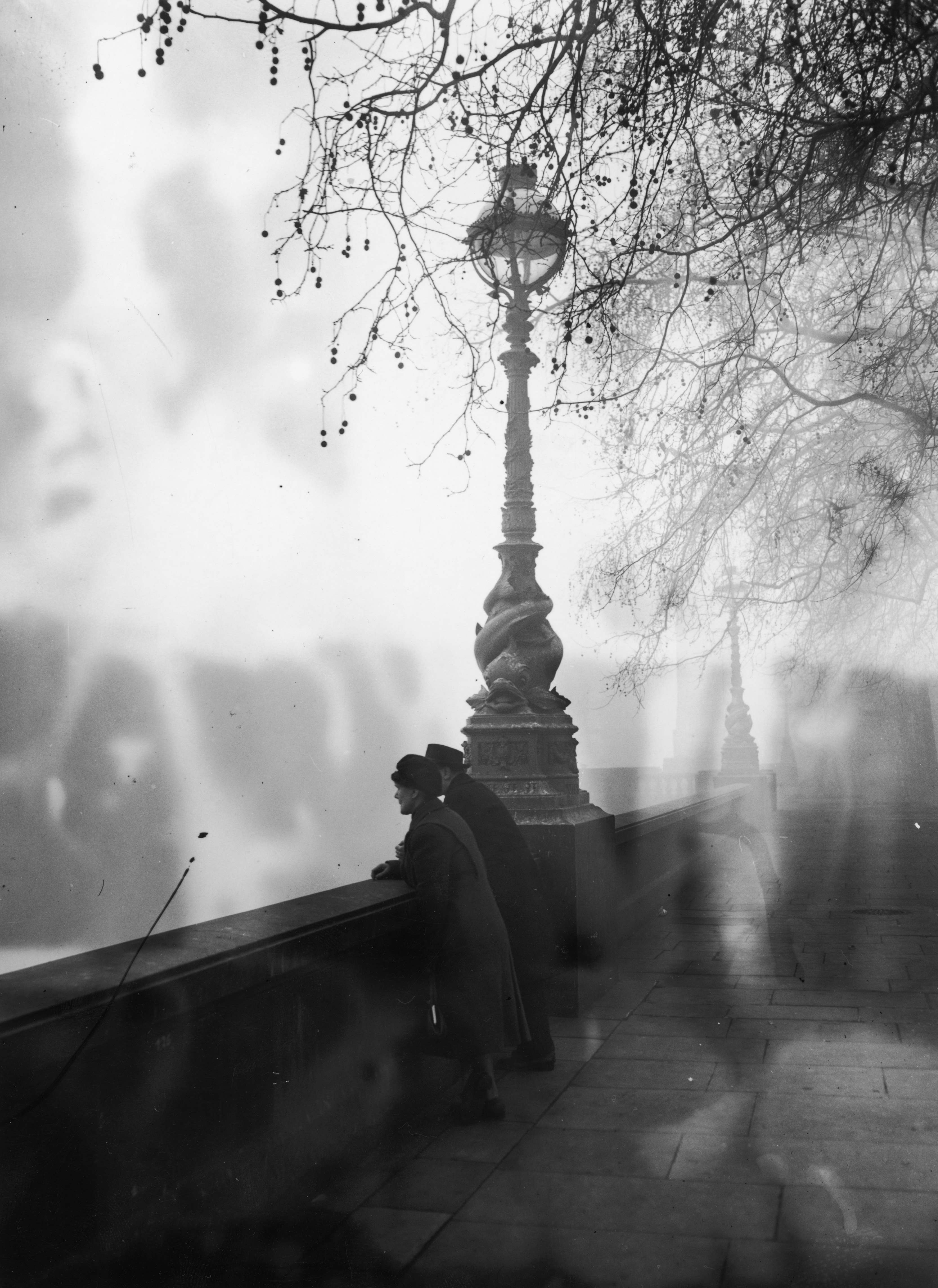
Mid-morning smog, as seen from the embankment at Blackfriars, London, 5th December 1952.
(Photo by Monty Fresco/Topical Press Agency/Hulton Archive/Getty Images)
On Saturday 6 December 1952 the performance of La Traviata at Sadler’s Wells had to be abandoned at the interval. Due to the dense ‘pea-souper’ smog which had been slowly creeping into the auditorium people at the back were unable to see the stage while the incessant coughing of the audience and the performers had become intolerable. Further west across London the greyhound racing at White City was halted when the dogs couldn’t see the hare and the race ended in a chaotic mess. A Mallard duck flying blindly across London reportedly smashed into Victoria station and crash-landed onto platform 6. The newspapers also reported that it took hours for torch bearing policeman to clear a traffic jam around Hammersmith Broadway.
The weather for the previous few weeks in London had been colder than normal but relatively fresh and clear. Houses throughout the capital, in those pre-central heating days, were burning large amounts of coal in a million fires and stoves – all of which were emitting a particulate-ridden sulphurous acidic smoke. The four power-stations at Battersea, Bankside, Lots Road and Kingston upon Thames were also all emitting vast amounts of black smoke into the capital’s air. On the December 4 an anticyclone settled over the cold, windless London which caused a “temperature inversion” – where cold, stagnant air is trapped under a layer of warm air. The fog was unable to escape and the presence of the tarry particles from the cheap sulphurous coal gave the smog an acrid smell and a yellow-black colour – hence the name pea-souper.
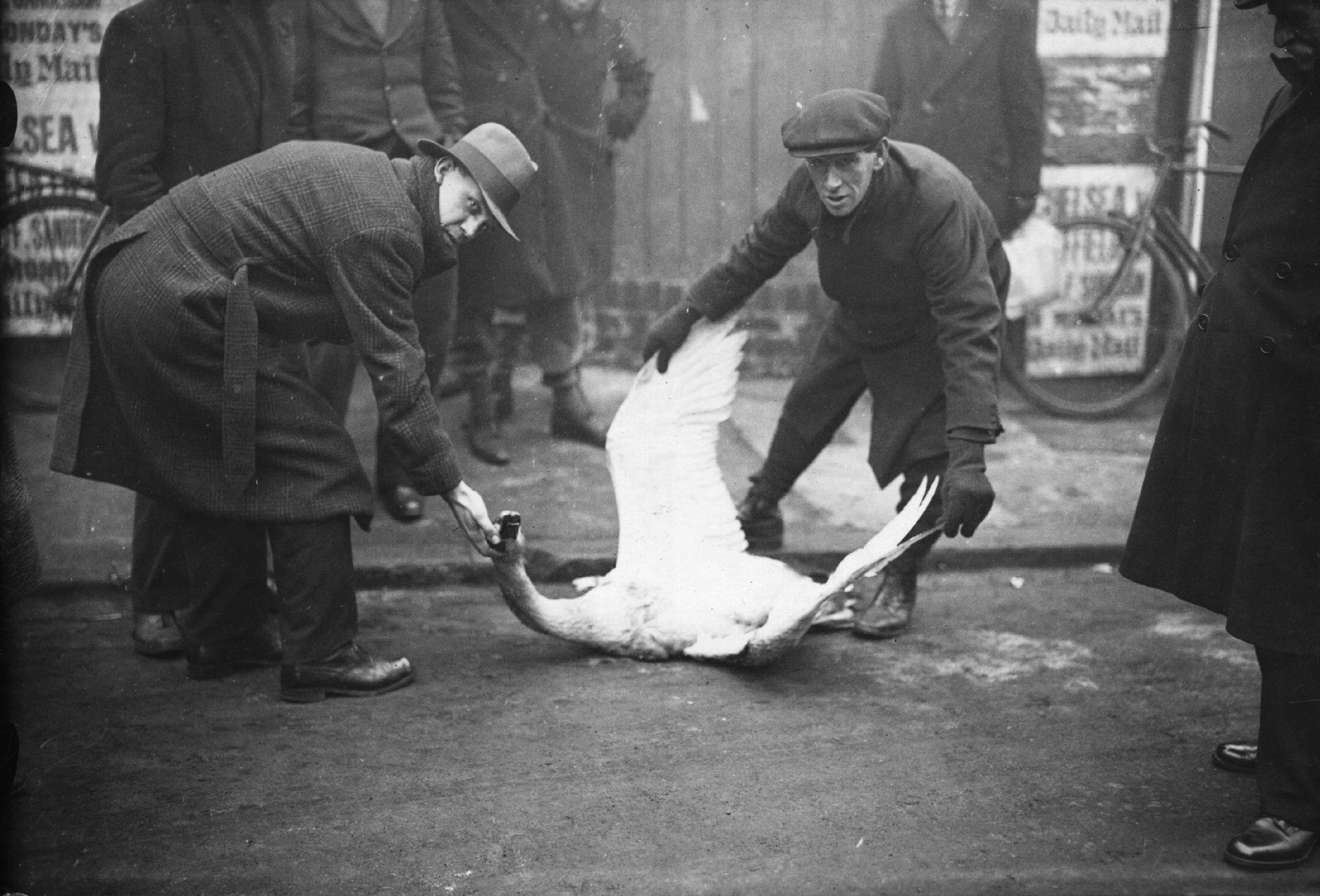
A swan killed by a car in the thick fog outside Stamford Bridge, London. The bird had landed in the road, exhausted by flying in the bad weather conditions, 1934. (Photo by Topical Press Agency/Getty Images)
By the next day the whole city had started to appear like a scene from Dickens’ Bleak House:
Fog everywhere. Fog up the river, where it flows among green aits and meadows; fog down the river, where it rolls defiled among the tiers of shipping, and the waterside pollutions of a great (and dirty) city…Chance people on the bridges peeping over the parapets into a nether sky of fog, with fog all round them, as if they were up in a balloon, and hanging in the misty clouds.
The fog on that Friday morning was thicker than anyone could remember even by people who had long considered the London smog just another aspect of living in the capital. Incidentally the portmanteau smog was coined only forty five years earlier, by HA Des Voeux, who first used it in 1905 to describe the conditions of fuliginous (sooty) fog that occurred all too often in the capital city.
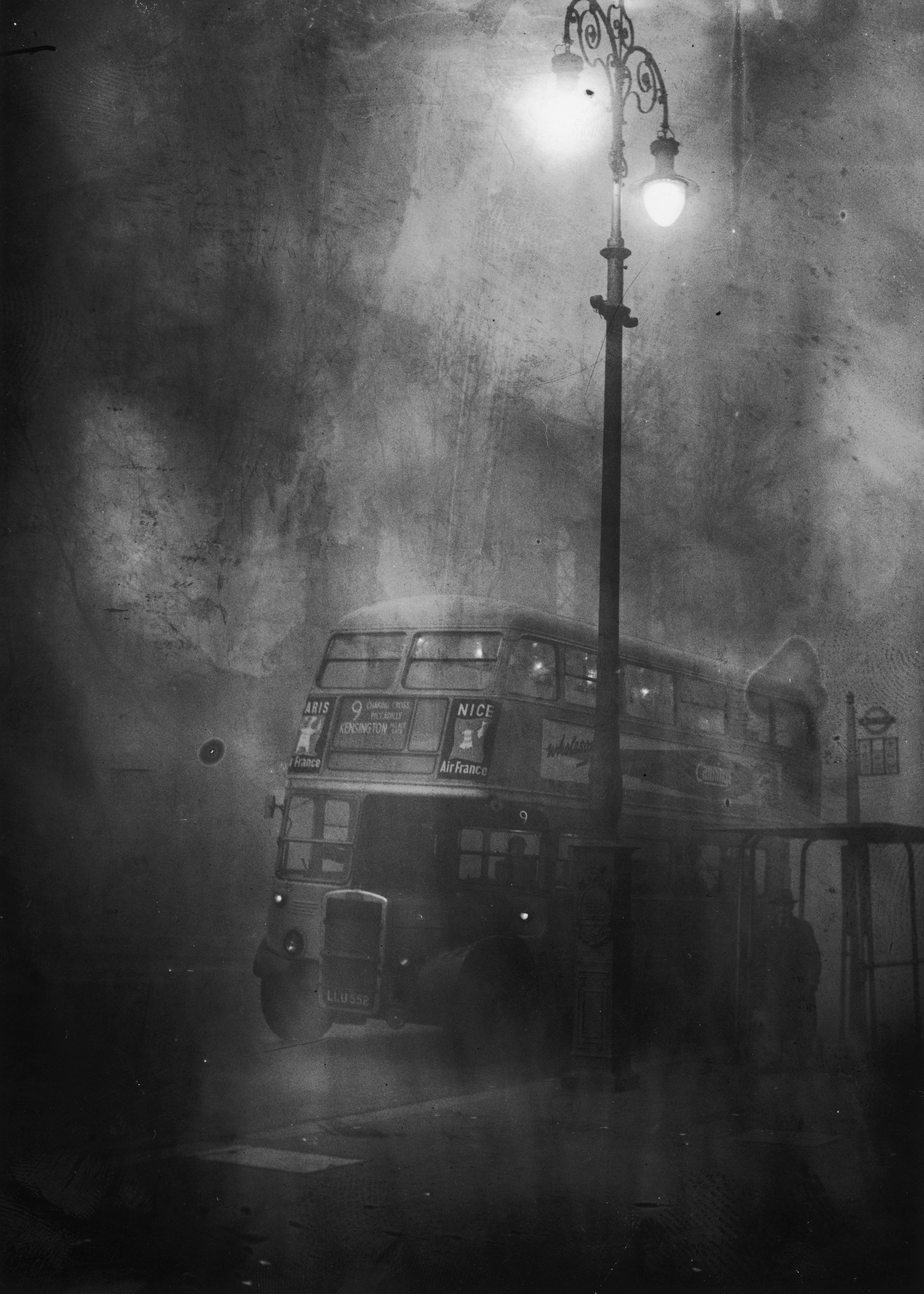
A London bus makes its way along Fleet Street in heavy smog, 6th December 1952.
(Photo by Edward Miller/Keystone/Hulton Archive/Getty Images)

A woman leads a car through London’s Regent’s Park with a torch, during the thick fog with visibility reduced to a few yards. (Photo by William Vanderson/Keystone/Getty Images)
The unpleasant impermeable fogs had been a feature of London for centuries and it wasn’t just Dickens who wrote about, as he would call it, the London Particular. Descriptions of the London fogs can be found in the Sherlock Holmes’s stories and in Louis Stephenson’s Dr Jekyll and Mr Hyde. The mythical quality of the London fog was reflected in practically any Hollywood film set in London even many years after the era of the London ‘pea-soupers’ had passed. Indeed the great smog of 1952 was the beginning of the end of the eye-stinging London Particulars.
By nightfall on Friday 5 December the smothering fog grew even more dense and visibility in most of London dropped to a few metres. During the next day the sun was too weak and low in the sky to make much of an impression on the fog and that night, and on the Sunday and Monday nights, it again thickened. In most of capital it was almost impossible for pedestrians, totally disorientated through lack of familiar landmarks, to find their way home.
Because of the dirt and the vile, clogging, unpleasant taste of the smog, many people held ‘masks’ of gauze, scarves or handkerchiefs to their faces. On the Isle of Dogs, almost surrounded by the Thames, visibility was occasionally officially reported to be nil – the fog was so dense that people could not see their own feet.

A group of City workers wearing masks against the heavy smog in London, 17th November 1953. (Photo by Terry Fincher/Keystone/Hulton Archive/Getty Images)
Hospitals were soon filled with patients suffering from acute respiratory diseases and, almost un-noticed, deaths in the city began to mount. No one noticed at first until undertakers started to run out of coffins and florists were running out of flowers. The very ill weren’t helped by ambulances searching in vain for victims and clanging their bells frantically while unable to extricate themselves from the snail-paced traffic jams.
This London smog, compared with a normal fog or even other urban smogs, was especially lethal after the war because it contained high quantities of sulphur oxides from the cheap sulphurous coal (the better quality hard coal was being exported) that reacted with the moisture in the air to produce a diluted, but lung-corrosive, sulphuric acid mist. The killer brew, to some people, triggered massive inflammation of the lungs – in other words thousands of people were dying almost through suffocation.
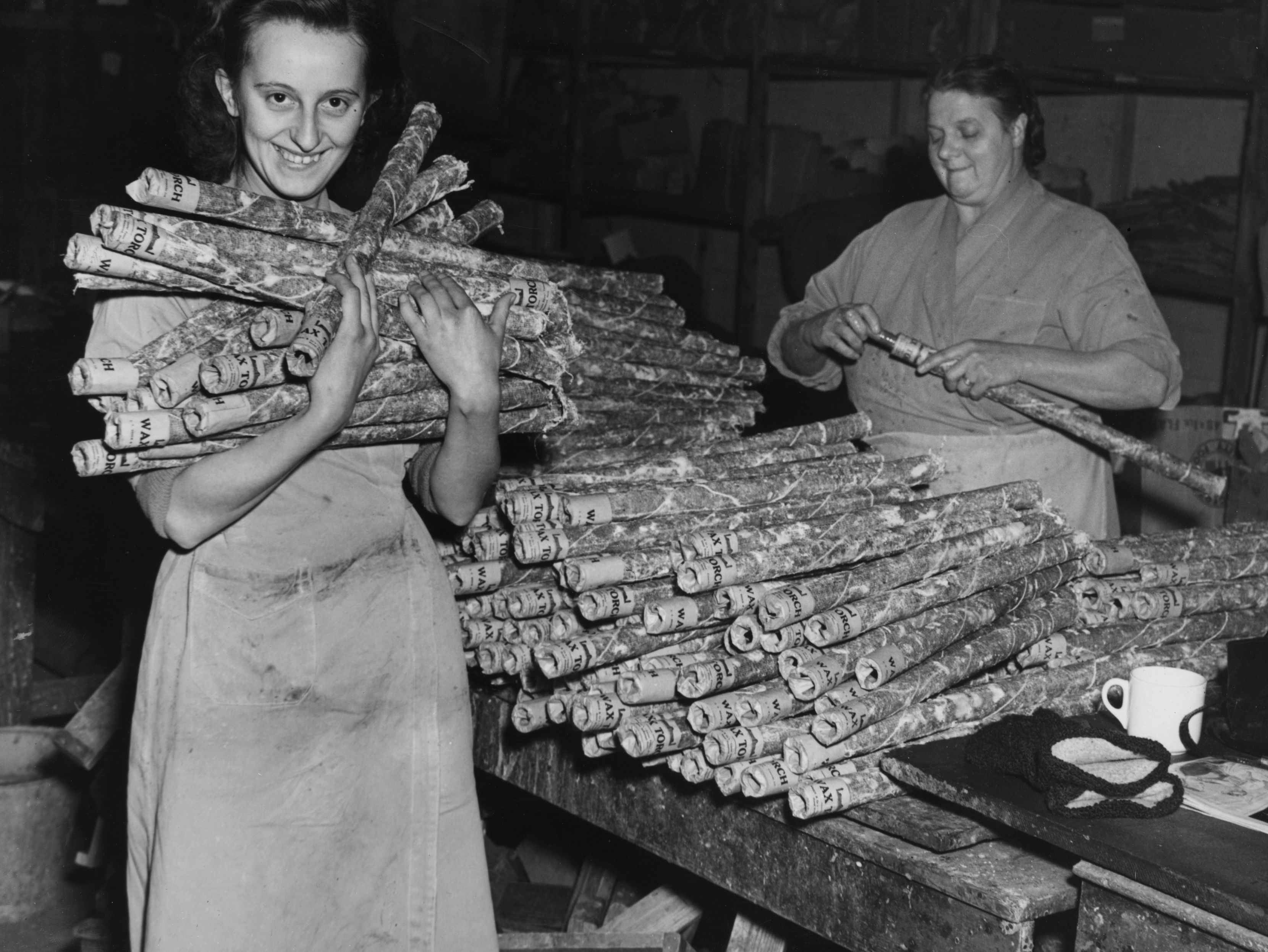
A factory worker holds a bundle of long-burning fog torches at the Brocks firework factory, Hertfordshire. The torches have been ordered by bus companies for use in the fog. (Photo by Price/Fox Photos/Getty Images)
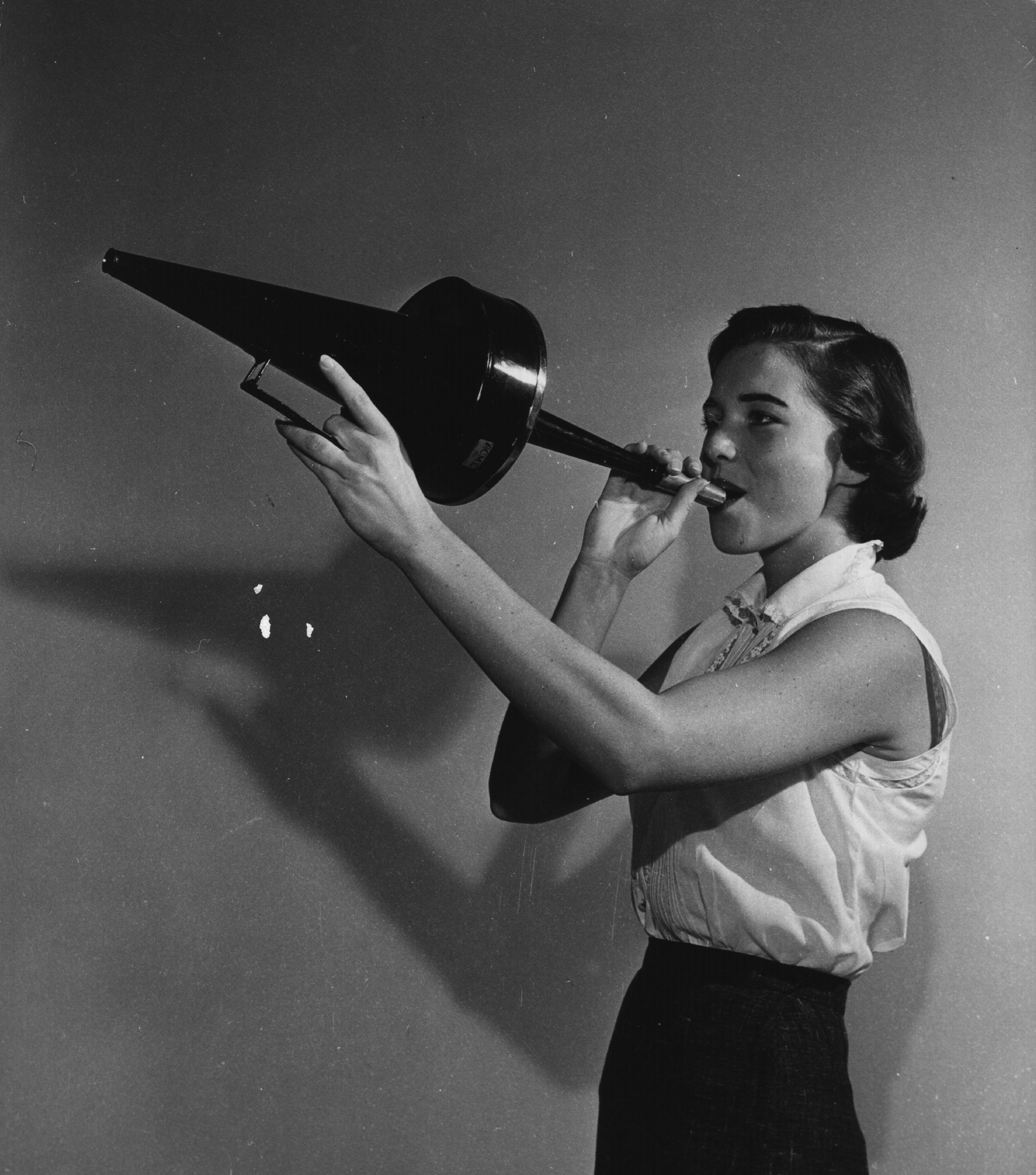
circa 1952: A girl blowing on a fog horn at the Carrell Instrument Services. (Photo by Al Barry/Three Lions/Getty Images)
The British Committee on Air Pollution finally estimated that during the five days that the smog smothered London there were 4,000 more deaths than would have occurred under normal circumstances. During the next two months it was thought another 8,000 deaths were caused by a direct result of the killer smog. Even during the next summer the death rate was 2% higher than normal.
Legislation followed the Great Smog of 1952 in the form of the City of London (Various Powers) Act of 1954 and the Clean Air Acts of 1956 and 1968. These Acts banned emissions of black smoke and decreed that residents of urban areas and operators of factories must convert to smokeless fuels.
Nothing on the scale of the 1952 Great Peasouper has ever occurred again and it remains the nation’s worst single air pollution disaster. There has been an astonishing hundred-fold reduction in atmospheric particulate levels in London over the last fifty years and the air, in most respects, is cleaner in the capital city than at any other time since the middle ages.
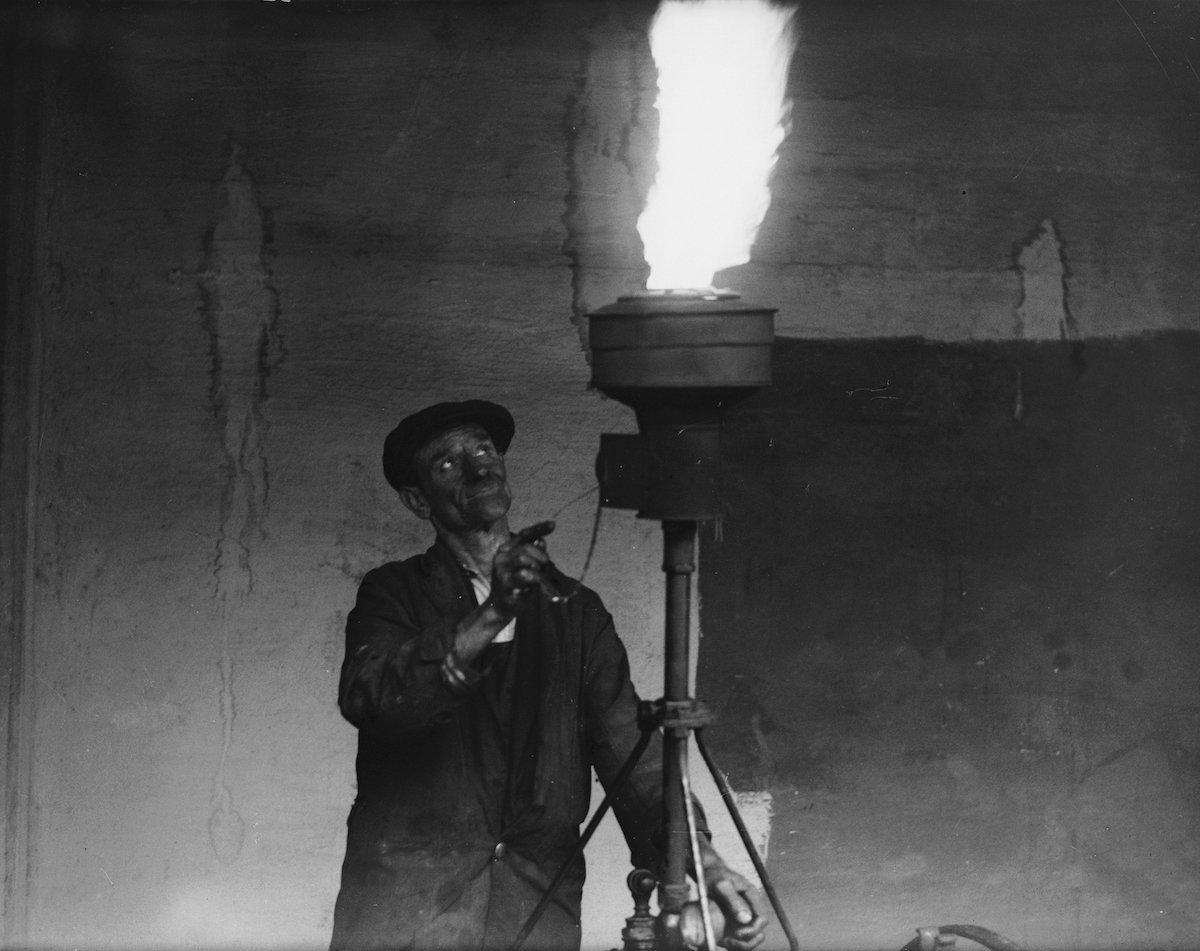
3rd October 1936: A workman at the Council depot for the City of Westminster on Gatliff Road tests one of London’s new fog lamps in preparation for the foggy days ahead. (Photo by Harry Todd/Fox Photos/Getty Images)
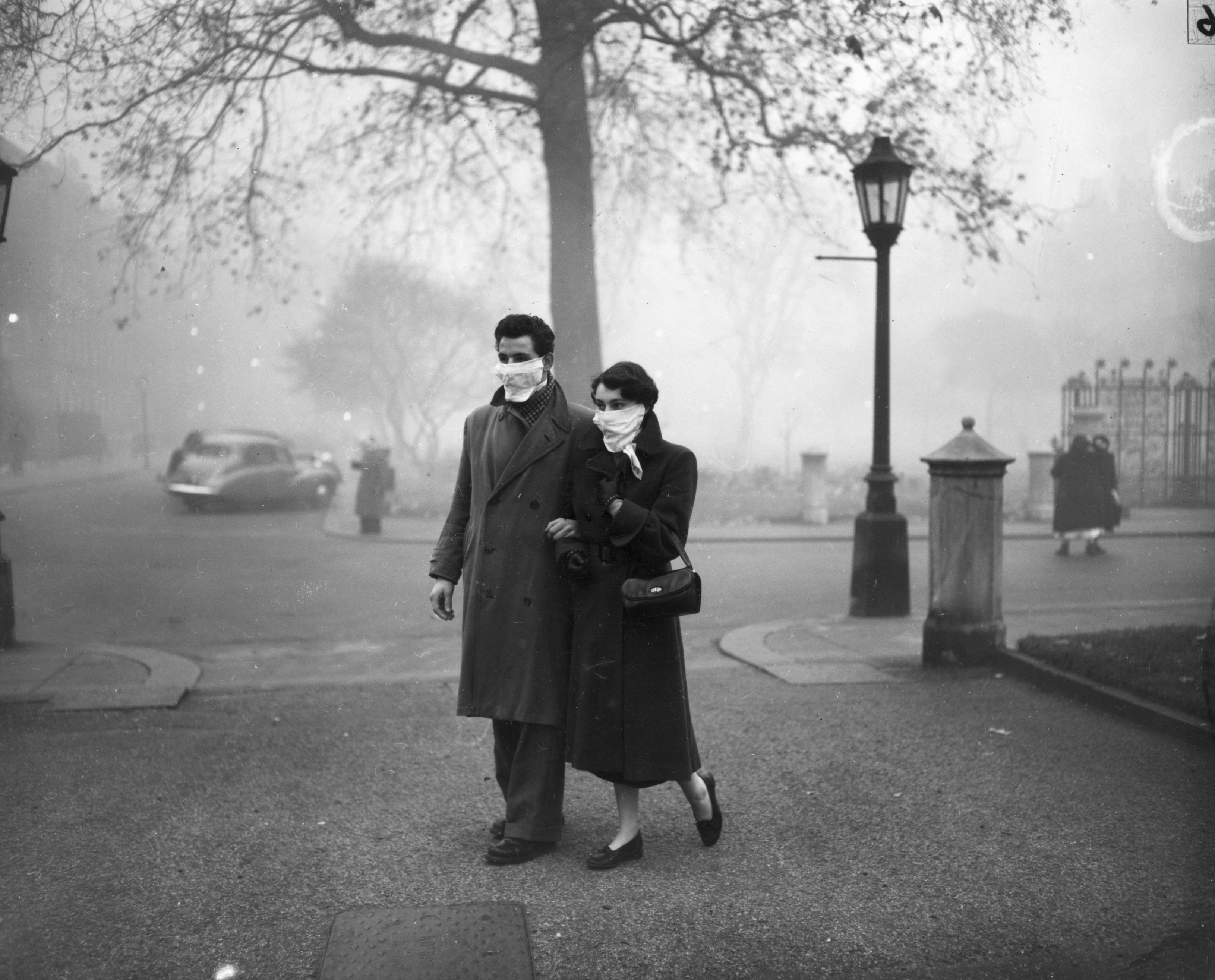
November 1953: A couple walking in London wearing smog masks on a foggy day. (Photo by Monty Fresco/Topical Press Agency/Getty Images)
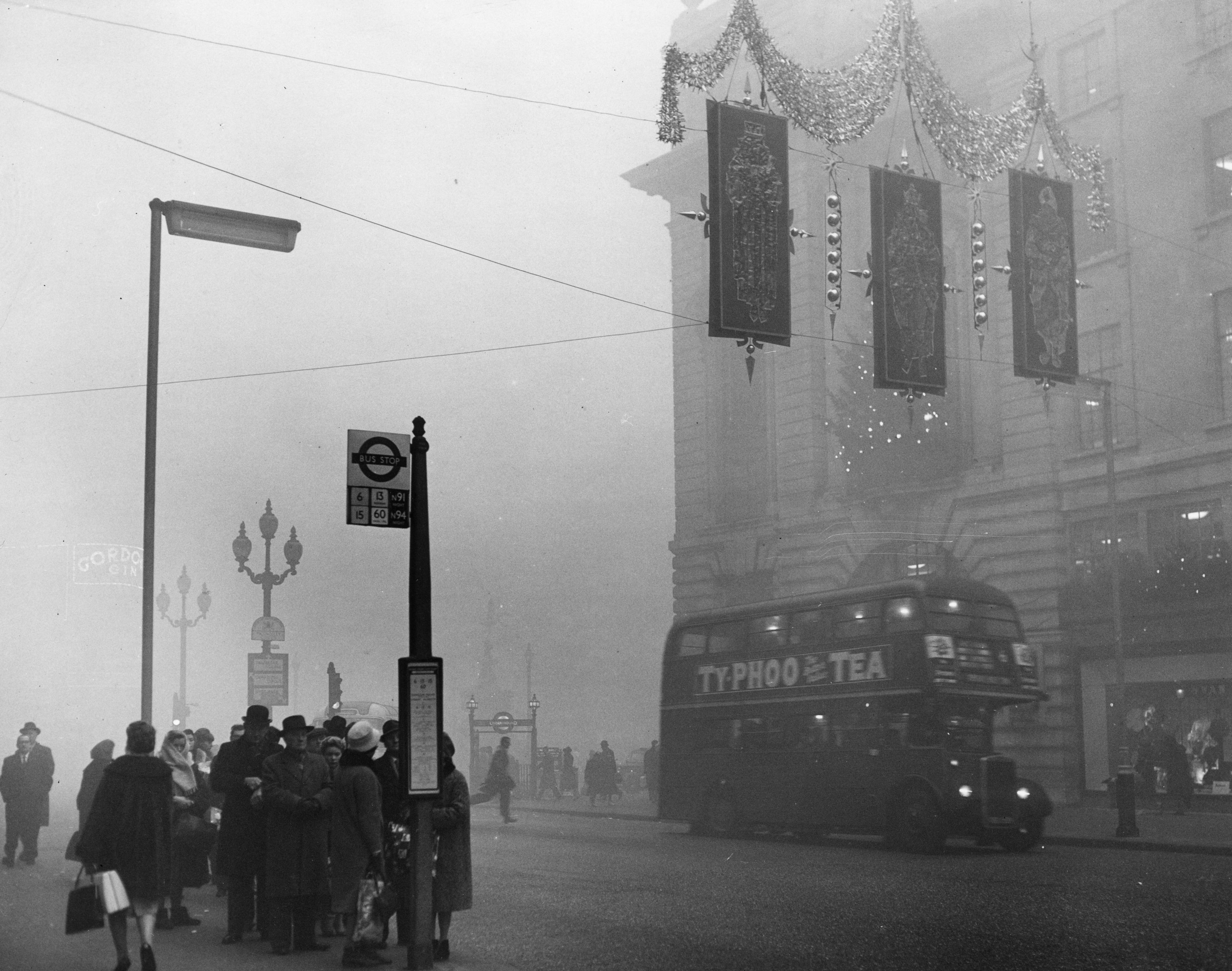
5th December 1962: A heavy fog descends on Christmas shoppers in London’s Regent Street. (Photo by Peter King/Fox Photos/Getty Images)
Would you like to support Flashbak?
Please consider making a donation to our site. We don't want to rely on ads to bring you the best of visual culture. You can also support us by signing up to our Mailing List. And you can also follow us on Facebook, Instagram and Twitter. For great art and culture delivered to your door, visit our shop.







